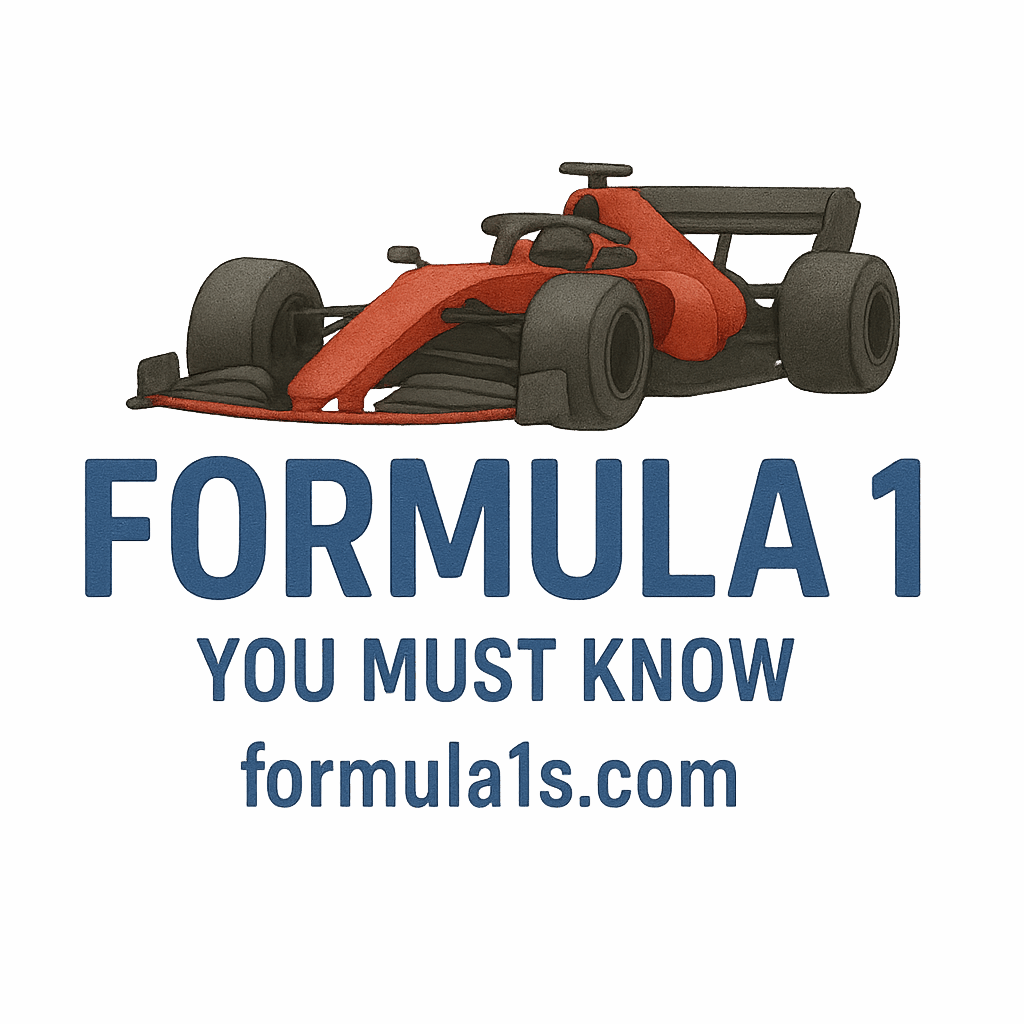Introduction
If you’re an avid Formula 1 fan, you’ve likely heard the term DRS (Drag Reduction System) buzzing around during races. It’s become a central feature of modern F1, especially during high-stakes battles for position. But what is DRS, and why should every fan understand it?
In this article, we’ll dive into 7 essential DRS facts that every F1 fan should know. Whether you’re a newbie or an experienced enthusiast, this guide will help you better appreciate the role of DRS in shaping races, strategies, and overall performance in Formula 1.

What is DRS?
DRS stands for Drag Reduction System, a technology that reduces aerodynamic drag on a car, allowing it to accelerate faster and more efficiently. When activated, DRS opens a flap on the rear wing of the car, reducing downforce and drag, resulting in increased straight-line speed.
This system is primarily designed to make overtaking easier during a race. However, it is not available at all times—there are specific conditions that must be met for a driver to activate DRS, which we will explore shortly.
For more about the mechanics behind F1 cars, be sure to check out our detailed Formula 1 Technology Innovations.
How DRS Works in Formula 1
The mechanics of DRS are deceptively simple but have a profound effect on racing. When a car is within one second of the car ahead, it can activate DRS in designated zones of the circuit. The rear wing opens to reduce drag, and the car’s speed increases, making it easier to pass the car in front.
But DRS isn’t just about speed. It’s about timing and precision. The system can only be activated under certain conditions. Drivers need to be close enough to the car ahead and must be in a DRS zone for the system to function. It’s not an automatic feature; it’s a tactical weapon that adds a layer of strategy to the race.
If you’re curious about more F1 race dynamics, explore our guide on Formula 1 Race Strategy.
The History of DRS in Formula 1
Introduced in 2011, DRS was part of an effort to encourage more overtaking and reduce the dominance of clean-air aerodynamics, which made it difficult for cars to follow closely. Before DRS, overtaking in Formula 1 often required exceptional driving skills, precise timing, and sometimes luck. But DRS changed the landscape of F1 racing, giving drivers a fighting chance to pass.
The introduction of DRS marked a significant shift in how Formula 1 races were fought. Initially met with skepticism, DRS has since become a pivotal element of race strategy. For more on the evolution of F1, check out Formula 1 History.
The Role of DRS in Racing Strategy
DRS plays a crucial role in Formula 1 race strategy. Teams and drivers use DRS to either defend their position or attempt to overtake. When a car is within 1 second of another, activating DRS provides the necessary boost to pass, but only if the trailing driver is in the right place at the right time.
The timing of DRS use can dramatically alter a race’s outcome. Drivers and teams often plan their DRS attacks around the circuit’s DRS zones, anticipating when to push for an overtake and when to hold back. It becomes even more significant in battles for the championship, where every second counts.
Want to know more about how race strategies work in Formula 1? Head over to F1 Performance and Strategy for an in-depth guide.
The Impact of DRS on Racing Performance
Since its introduction, DRS has revolutionized racing performance in Formula 1. The system has made overtaking more accessible, reducing the reliance on perfect timing and driver skill to pass. DRS has made Formula 1 races much more dynamic, allowing drivers to close gaps on rivals more easily.
However, while DRS provides a speed boost, it doesn’t guarantee a successful overtake. Other factors, such as tire wear and traffic, also influence the effectiveness of DRS. It’s a tool, not a shortcut. For more insights into how F1 performance works, be sure to check out our article on F1 Teams and Drivers.
DRS Zones Explained
In every Formula 1 race, there are specific DRS zones where drivers can activate the system. These zones are typically located on long straights where the reduction in drag can have the greatest impact. In most races, there is at least one designated DRS zone, but some circuits, such as Circuit de Spa-Francorchamps, feature two zones.
Each track has its unique configuration, and the location of DRS zones is chosen based on the layout of the track, the safety of the drivers, and the potential for overtaking. For a more detailed look at the circuits themselves, visit our F1 Circuits and Tracks page.
Restrictions on Using DRS
While DRS offers a substantial performance boost, it is not available at all times during a race. There are strict regulations on when and where it can be activated:
- Proximity Requirement: A driver must be within 1 second of the car ahead when crossing the detection line.
- Weather Conditions: DRS is only activated in dry weather conditions.
- Race Phases: DRS is unavailable during safety car periods or at the start of the race.
These regulations ensure that DRS is used strategically and not at random. Understanding when and how DRS can be used is essential for following the race closely.
Learn more about Formula 1 Race Rules for a deeper dive into the regulations.
The Controversy Surrounding DRS
Despite its clear advantages in creating overtaking opportunities, DRS has sparked considerable debate among fans and critics alike. Some argue that it has taken away the traditional skill of overtaking, with the system making passing too easy. Others feel that DRS can be overly reliant on technology rather than driver skill.
While some fans enjoy the excitement it brings, others see it as a gimmick that reduces the challenge of racing. However, there’s no denying that DRS has reshaped Formula 1 and sparked important discussions on how technology affects the sport. To explore more about the controversy, check out our article on F1 Fan Tips.
Does DRS Affect the Drivers’ Experience?
For drivers, DRS changes the way they approach a race. It provides them with a tool to get past slower cars, but also places them at risk of being overtaken themselves. They have to think about DRS activation not just in terms of speed but also race positioning and strategy.
The DRS effect can turn a race from a battle of strategy into a drag race, but it also adds an extra layer of decision-making. The car ahead might use DRS to fend off a challenger, or a driver might use it to leapfrog someone in a key position.
The Future of DRS in Formula 1
Looking ahead, the future of DRS remains uncertain. Some believe that its role will become even more critical in the years to come, while others think it may be phased out as Formula 1 continues to evolve. As the sport adapts to new technologies and racing formats, the role of DRS will undoubtedly be reexamined.
If you’re interested in more on the future of F1, our article on Formula 1 Innovation discusses how tech is shaping the sport’s future.
Why DRS is Important for F1 Fans
For Formula 1 fans, understanding DRS brings an added layer of excitement to each race. It’s not just about watching cars zoom around the track; it’s about understanding the strategies and technologies that make racing so thrilling.
Knowing when and why DRS is used can help fans better appreciate the dynamics of each race. From dramatic overtakes to tactical maneuvers, DRS plays a huge role in determining the outcome of every Grand Prix.
To enhance your fan experience, visit our F1 Pioneers page to learn about the trailblazers who shaped the sport.
Conclusion
In conclusion, DRS has become an integral part of Formula 1 racing. It has altered the way races are contested and introduced a strategic element that was once absent from the sport. Whether you love it or dislike it, understanding how DRS works will make you a more informed and engaged F1 fan. The system is here to stay, and it continues to evolve as part of the thrilling world of Formula 1.
Frequently Asked Questions
- What does DRS stand for in Formula 1?
DRS stands for Drag Reduction System, which reduces aerodynamic drag to help with overtaking. - When can a driver activate DRS?
A driver can activate DRS when they are within 1 second of the car ahead and in the designated DRS zone. - How many DRS zones are there in a race?
The number of DRS zones varies by circuit, with most races having at least one zone, and some having two. - Can DRS be used at all times during a race?
No, DRS can only be used during specific race conditions and weather, typically after the first few laps and in dry conditions. - Why was DRS introduced in Formula 1?
DRS was introduced to make overtaking easier and improve race excitement by reducing aerodynamic drag. - Does DRS affect driver skill?
While DRS makes overtaking easier, drivers still need skill and strategy to make the best use of it. - What’s the future of DRS in Formula 1?
The future of DRS is uncertain, but it’s likely to remain a key part of Formula 1 racing as the sport evolves.


